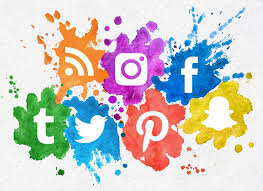There's So Much out There? Where Do I Start with My Author Platform?
/Social media and book marketing can be overwhelming. There is a lot out there, and it takes time to build and maintain your sites and followers. When I got my first contract, I had no idea how much marketing and promotion were involved. Here’s my advice to new and sage authors:
Start small. Start with the sites that your readers are on. My primary sites are Facebook, Twitter, and Instagram. But I do have accounts on Goodreads, LinkedIn, YouTube, Pinterest, Bookbub, and Amazon.
Schedule some time daily to log on, post, share others’ posts, and build your followers. Readers like to interact with authors. All of your posts shouldn’t be “buy my book.”
Post photos of your hobbies, pets, or travel. Post comments or questions that give your followers a chance to interact. Post photos of you doing research or other activities.
When you mention or include photos of others, make sure to tag them in the post. You want people to like, comment, and share. If you attend a class, workshop, or conference, take a picture and tag the presenters.
There is scheduling software that you can use for Facebook author pages, Twitter, and Instagram. This helps me line up my plan for the week. I usually do my scheduling for the next week on one day.
Set up your social media sites and website before you are published. It takes some time to build an audience of followers.
Authors need to have a website with their unique URL. This is your brand and home base for your activities. There are lots of services out there where you can build your site from templates. (I’ve used Wix, Squarespace, and WordPress.) I like that I can update my site when I want. If your visitors see old or outdated content, they rarely come back. (If you’re not sure how to use services like this, check out YouTube. There are lots of good instructions.)
Make sure that your website and social media sites have the same look and feel. That means your color palettes and graphics look the same or similar. Make sure you have a professional headshot, so readers can identify you. Make sure your name is easily identifiable.
Find other authors in your genre and look at their sites. Do your colors and graphics match your writing style? I received some good feedback on my website from a publicist. (My first published story was in an anthology that had red and black on the cover, so I used those as my primary colors on my first website.) After my first novel came out, she said that my books are light and funny, and that I should stick to pastel colors.
Set small goals. Make sure you have interesting content to post regularly (or schedule). Then focus on one site each week to build your followers. Follow other authors in your genre and their followers. Make sure that you interact with posts and answer questions. Your numbers will grow organically as you participate more.
It takes a while to build your audience. The more you interact and post interesting things, the more you’ll see your numbers grow. It can be overwhelming, but working on your social media reach a little at a time will pay off. (I started off with three Twitter followers.)















